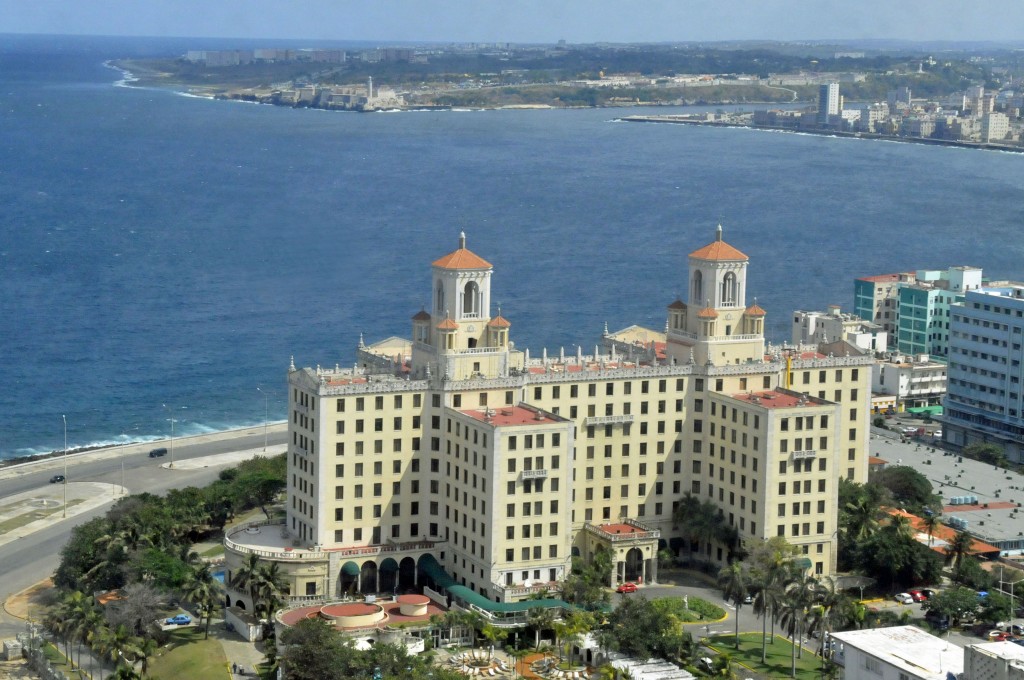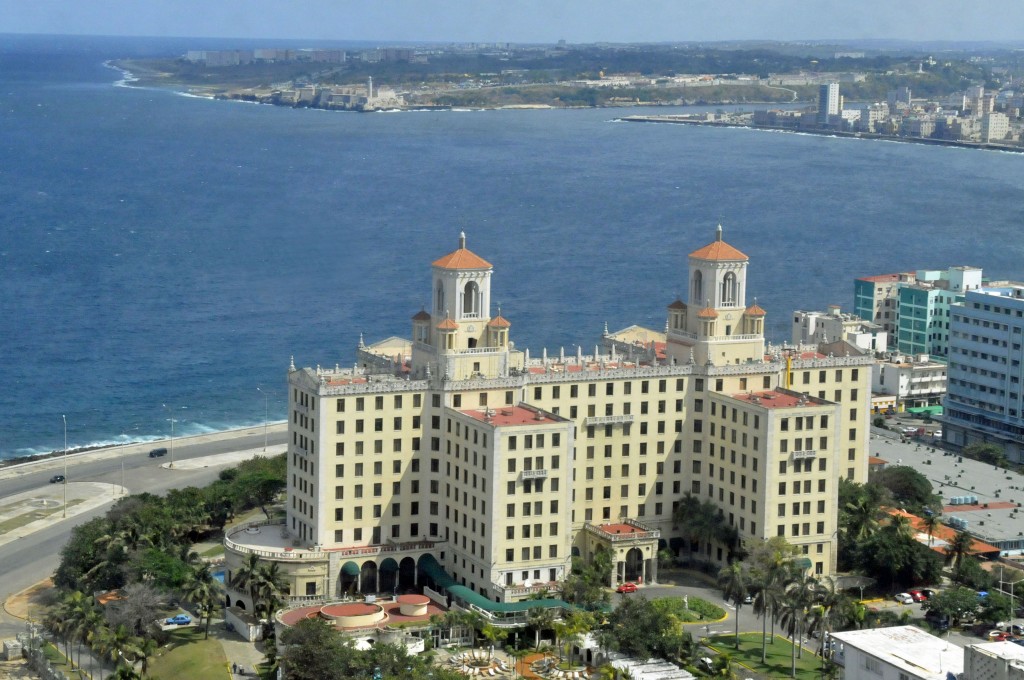
The 10-story building overlooking the Havana Harbor bears an intentional resemblance to a famous Florida hotel. The Cuban version has had a much more colorful past than its American relative.
Havana’s Hotel Nacional lies on the site of an old battery near the seawall separating Havana from the Caribbean. Reportedly financed by mobsters using bootlegging earnings, the luxury hotel was planned in the 1920s to accommodate the growing number of Americans traveling to Havana to drink, gamble and ogle showgirls. The New York firm of McKim, Mead and White designed the hotel to mimic the Breakers in Palm Beach, Florida, its own design aping Rome’s Villa Medici. About 8,000 workers built the 426-room hotel, which opened in 1930 and became the favorite of gangsters, movie stars and assorted notables, including Lucky Luciano, Meyer Lansky, Errol Flynn, Rita Hayworth, Jean-Paul Sartre and Ernest Hemingway.
In 1933, during the “Revolt of the Sergeants,” junior army officers led by a young Fulgencio Batista launched a bloody attack against senior officers living luxuriously in the hotel. In December 1946, 500 representatives of organized crime families met at the hotel for a six-day summit organized by Luciano and hotel owner Lansky, who shared the hotel’s gambling profits with Batista. Frank Sinatra provided the entertainment for the infamous conclave, fictionalized in “Godfather Part II.” After overthrowing American-supported Batista in 1959, Fidel Castro nationalized the hotel and closed its famous casino and bawdy cabaret. Castro and Che Guevara used the hotel as their headquarters during the Cuban Missile Crisis, protected by anti-aircraft guns positioned on the grounds. Castro refurbished the hotel in the 1990s to help expand Cuban tourism and an anti-Castro group seeking to damage the economy bombed the hotel in 1997.
Today, the land on which the Hotel Nacional sits, complete with shore cannons, is a UNESCO World Heritage site. The hotel’s Churchill Bar reflects Winston Churchill’s 1946 stay and a bust of Nat King Cole remembers his 1957 performances after earlier being refused entrance to the hotel because of his race. Mirroring eight decades of Cuban history, the hotel remains a sentimental favorite of Russian diplomats.





